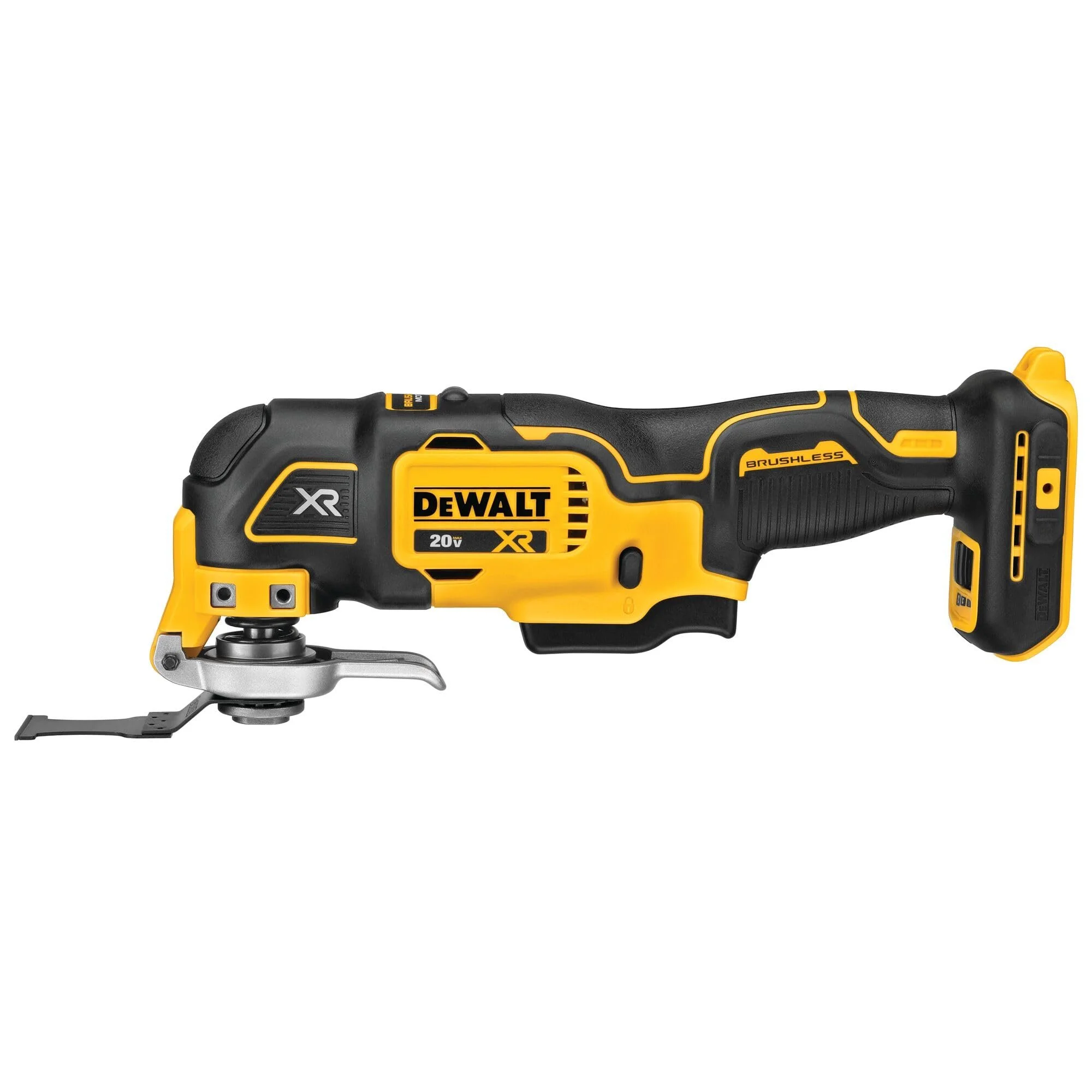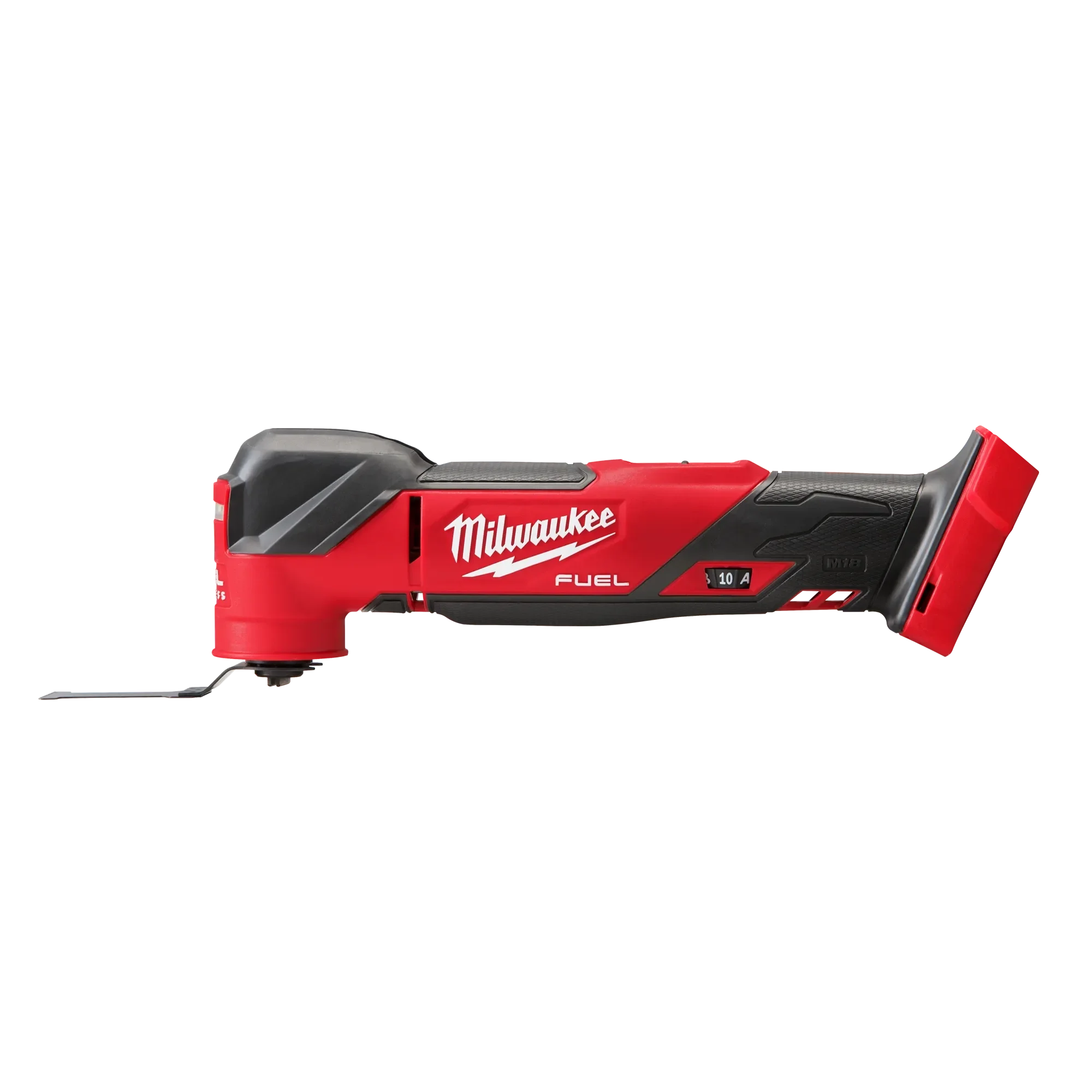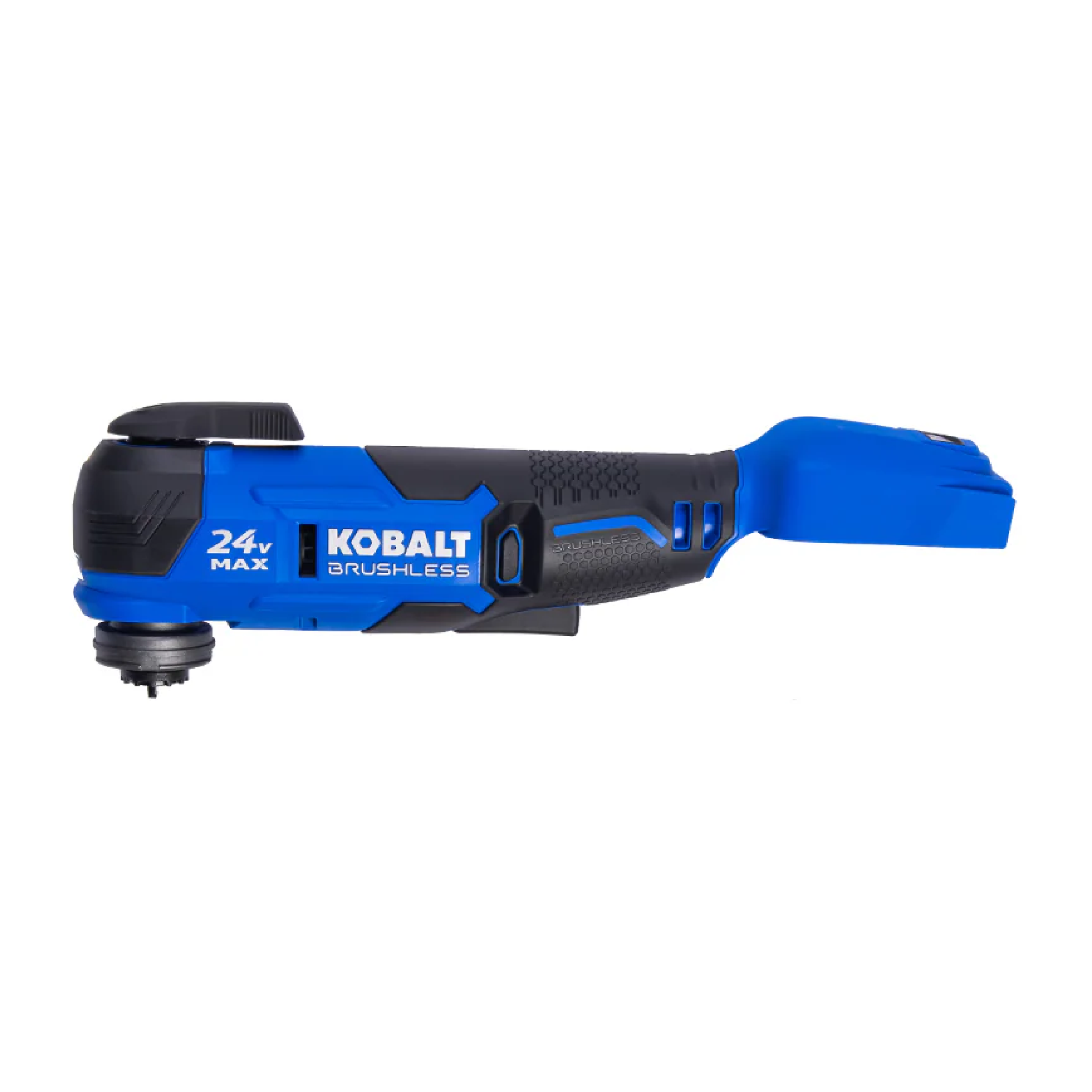When shoppers at Lowe’s couldn’t unlock Kobalt’s oscillating tool—or their wrists—I set out to design a better way.
Overview
In the summer of 2024, while working at Lowe’s, I began noticing a pattern of customer dissatisfaction with the Kobalt oscillating tool. Through direct conversations with shoppers, I identified two consistent pain points: difficulty understanding the blade release mechanism and discomfort with the tool’s grip. Framing these issues as a design challenge, I set out to reimagine the tool with controls that felt intuitive and a grip that supported natural use.
Faulty Mapping
In oscillating tools, the blade release mechanism is intended to afford detachment and reattachment. However, on the current Kobalt Oscillating Tool (highlighted in the image set below, far right), this affordance is poorly communicated. Here, the mechanism consists of a turnstile on top of the tool. When rotated exactly 180 degrees in either direction, the turnstile lifts a spring-actuated lock, exposing the notches that secure the blade; returning the turnstile another 180 degrees re-engages the lock to fasten the blade in place.
The only tactile cue is a thin push-plate protruding from the turnstile, which, unless the tool is rotated sideways, requires an awkward bend of the wrist or forearm. Its ineffective form and placement obscure the intended action, leaving users uncertain whether the control should be pushed, pulled, or rotated—rendering the affordance ambiguous.
Even when the correct motion is discovered, the mapping between action and outcome remains unintuitive. The rotational motion of the turnstile does not naturally correspond to the vertical movement of the lock. Misled by this signifier, some users treated the mechanism as screw-like, rotating the turnstile repeatedly in an attempt to fasten or loosen the blade.




Ergonomics
In addition to its ambiguous mapping, the placement of the turnstile itself further hampers usability. The turnstile is positioned at the very top of the tool, directly in the area where users naturally place their hands for support. Because the oscillating tool is frequently held in varied orientations, this location proves especially problematic. During plunge cuts or when the tool is inverted for tasks such as cutting drywall, users typically stabilize the device by cupping one hand around the top-front housing. In these contexts, a smooth, unobstructed surface is critical to achieving a secure and comfortable grip.
By contrast, Kobalt’s design introduces the turnstile precisely where users expect a supportive resting point for the hand. Competitor tools avoid this conflict by relocating or recessing the release mechanism away from key grip zones, thereby preserving both ergonomic comfort and operational efficiency. Kobalt’s choice of placement thus creates interference at the moment of highest demand, when stability and control are most essential.
Redesign
To address these problems, I replaced the turnstile with a quick-release, lever-actuated cam lock. When lifted, the lever disengages a clamp so the blade can be removed; when pressed back down, it forces the clamp tight to secure it. Unlike the turnstile, which inadvertently suggested multiple possible actions, the lever affords only one clear motion: up to unlock, down to lock. Distinct tactile snaps reinforce these positions, eliminating uncertainty about whether the mechanism has been engaged. The reduced range of motion further simplifies the interaction, while the binary up–down mapping corresponds naturally to the states of unlocked and locked.
Furthermore, when in the locked position, the lever is recessed into the front housing, allowing the tool to be gripped comfortably without obstruction. Together, these changes provide a more intuitive, ergonomic, and reliable user experience.



